This transformation allows such works to transcend their era, securing their place as milestones in the history of art. Ultimately, artistic scandal not only challenges conventions but also plays a pivotal role in shaping an artwork’s journey from rejection to reverence.
Below, we will explore works that, despite criticism, have left an indelible mark on the global art scene. These works exemplify the journey from contempt to reverence that characterizes artistic evolution.
The Birth of Artistic Provocation: Dadaism and the Origins of Anti-Art
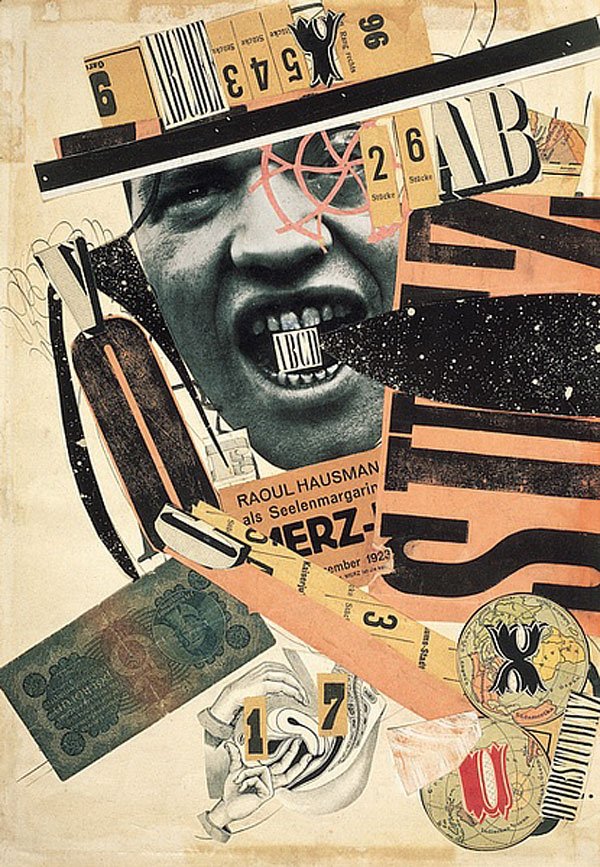
Raoul Hausmann, ABCD , 1923-1924
Known as the “anti-art” movement, Dadaism emerged from the disgust and resentment sparked by the bloodshed and horrors of World War I, which began in 1914 and ended in 1918. Rooted in a deep rejection of the values that led to such devastation, Dadaism sought to challenge societal norms and conventions, deliberately creating art designed to shock, confuse, and outrage. It was not just a rebellion against traditional aesthetics but a profound critique of the cultural and political systems that the Dadaists felt had failed humanity. This provocative movement laid the foundation for modern artistic disruption, marking one of the first moments in art history where scandal and defiance became tools for creative expression.
The Origin of the World
Gustave Courbet‘s painting The Origin of the World marked a turning point in the artistic representation of the nude. Instead of presenting the female body in an idealized or distant way, Courbet focuses directly on the genitalia, omitting the figure’s face.

Gustave Courbet, L’Origine du monde, 1866
This realistic approach, which shocked at the time, continues to face resistance and censorship, with reproductions of the work still the subject of controversy and rejection among conservative audiences and in specialized publications.
Brancusi Princess X
Created in 1916, Princess X was criticized for its implicit sexual character. It combines the curves of a female nude with a stylized phallus, and plays with gender boundaries by challenging the conventional norms of female representation in art.
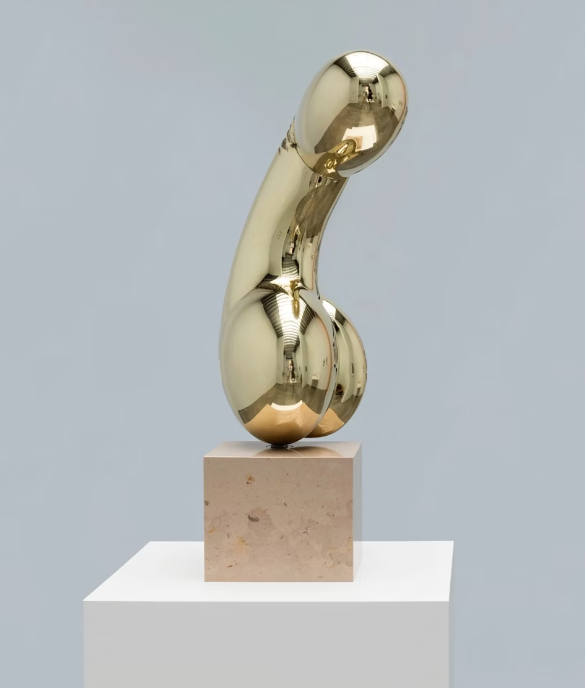
Constantin Brancusi, Princess X, 1915–16
The piece rejected at the Salon des Indépendants in 1920 was initially rejected by critics and the public, leading to a series of debates about the limits of art and morality as well as reflection on the role of art in provoking and questioning social norms.
Duchamp and the Reinvention of Art
We can’t discuss artistic controversies without starting with one of the most iconic works of all time. Marcel Duchamp‘s Fountain mark the birth of the readymade, an indispitable milestone in the way we understand art.

Marcel Duchamp, R. Mutt, 1917
In 1917, French artist Marcel Duchamp presented a urinal signed with the pseudonym R. Mutt at the Society of Independent Artists exhibition in New York. Initially rejected, the piece was exhibited due to a clause in the event that guaranteed the inclusion of all paid entries.
Although controversial, the installation challenged conventions and generated a crucial debate about the concept of art, claiming that ordinary objects can be considered art if defined as such by the artistic medium. Duchamp summed up his vision: “whatever I define as art will be considered art”.
La merde d’artiste
In May 1961, Italian artist Piero Manzoni took the concept of ready-made to another level. Known for his conceptual works, the artist allegedly defecated in 90 cans and began selling them in various art galleries, including gallery Azimut, Iris Clert, Naviglio.
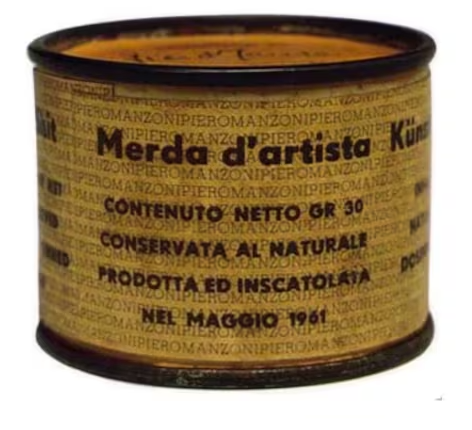
Piero Manzoni, La merde d’artiste, 1961
The work of art was auctioned by the Milanese house Il Ponte in 2016 for €275.000. Although some find the idea of the artwork indigestible, for many it is considered an ingenious “artistic provocation” due to its play on words.
Perfomance and Human Free Will
Marina Abramovic Rythm 0 consisted in a six hours performance with a table containing 72 objects that could cause pleasure or pain, such as lipsticks, feathers, grapes, a knife, a whip and a loaded gun. Initially, the audience acted cautiously, but gradually became more violent, tearing her clothes, piercing her skin with thorns and even pointing the gun at the artist’s neck.

Marina Abramović, Rhythm 0, 1974
Abramović‘s performances challenge social and moral norms by using the body as an object of public experimentation, raising ethical questions. Despite this recognition, they face resistance from critics who see them as more provocative than aesthetic.
Unmasking Art Scandals
In 1989, the Guerrilla Girls collective created an iconic poster criticizing gender inequality at the Met Museum. Using a satirical image of Ingres’ La Grande Odalisque with a gorilla mask, the poster denounced the exhibition of more female nudes than works by women artists.
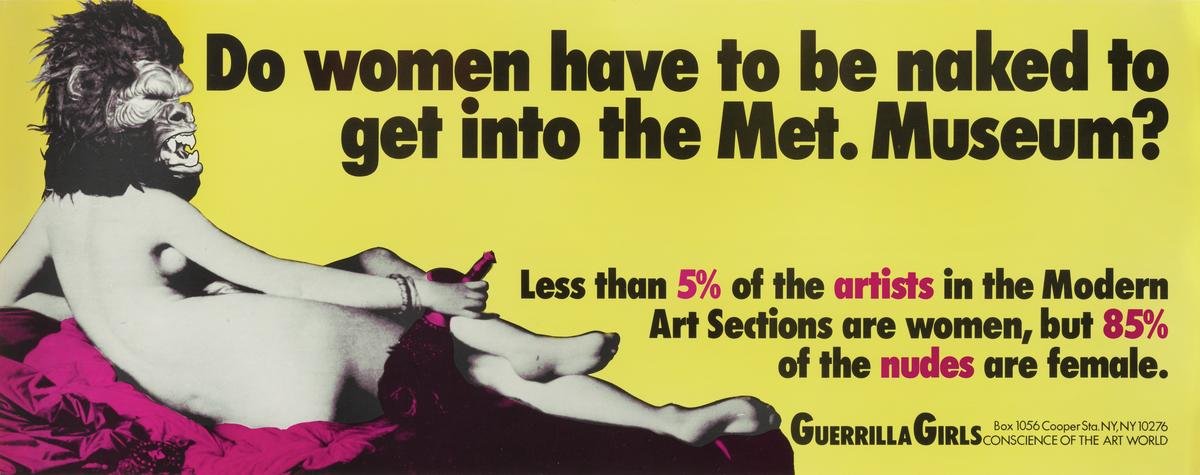
Guerrilla Girls, Do women have to be naked to get into the Met. Museum?, 1989
This work exemplifies the activism of the Guerrilla Girls, who use humor and provocation to highlight sexism and racism in art.
Questioning and Challenging Heritage
The work consists of three photographs showing the artist Ai Weiwei breaking a 200-year-old ceremonial urn from the Han dynasty, criticizing the blind preservation of cultural traditions and questioning the value placed on historical artifacts.

Ai Weiwei, Dropping a Han Dynasty Urn, 1995
Created in 1995, the work, seen by many as the destruction of a valuable object, questions, according to the artist, the unconditional preservation of the past and reflects on the impact of modernity: “General Mao said that we can only build a new world by destroying the old one.” Ai Weiwei was imprisoned without trial in in 2011 for criticizing China’s regime. Since his escaping in 2015, he has continued his work as an artist in exile.
Breaking Taboos
Chris Ofili‘s The Holy Virgin Mary, exhibited at the Tate Modern in London in 1996, presents an unconventional representation of the Virgin Mary using elephant dung and collages of pornographic clippings.
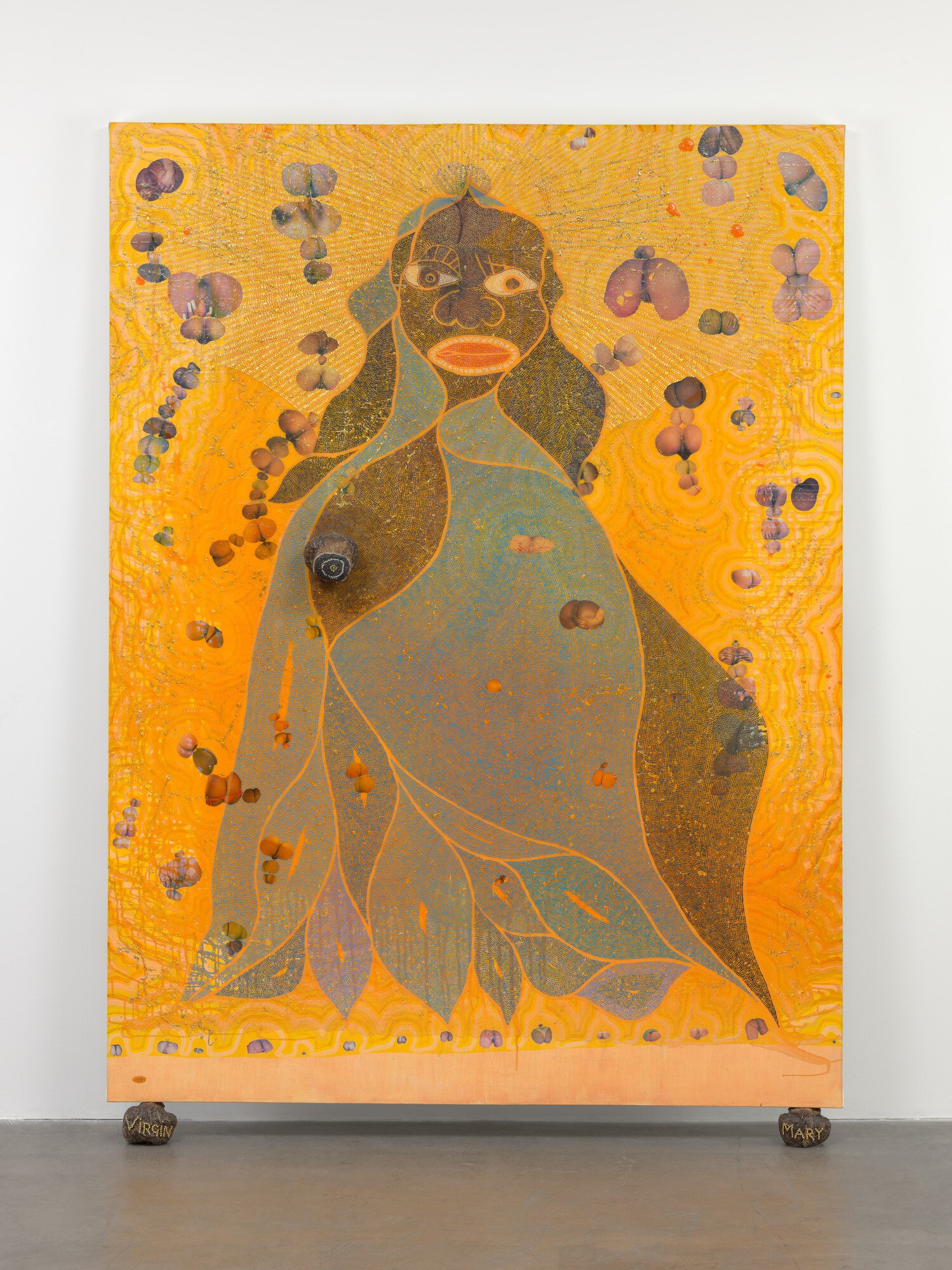
Chris Ofili, The Holy Virgin Mary, 1996
The work gained national notoriety in 1999 when it was attacked by the then mayor of New York, Rudolph Giuliani, who considered it offensive. The painting is a significant example of how art can challenge cultural and religious norms and provoke discussions about the intersection between art, politics and religion.
Intimate disorder
Tracey Emin‘s My Bed challenged social expectations about women and art. First exhibited in 1998, the piece features a disheveled bed surrounded by personal items, including underwear and food packaging, offering an intimate and vulnerable glimpse into the artist’s life.
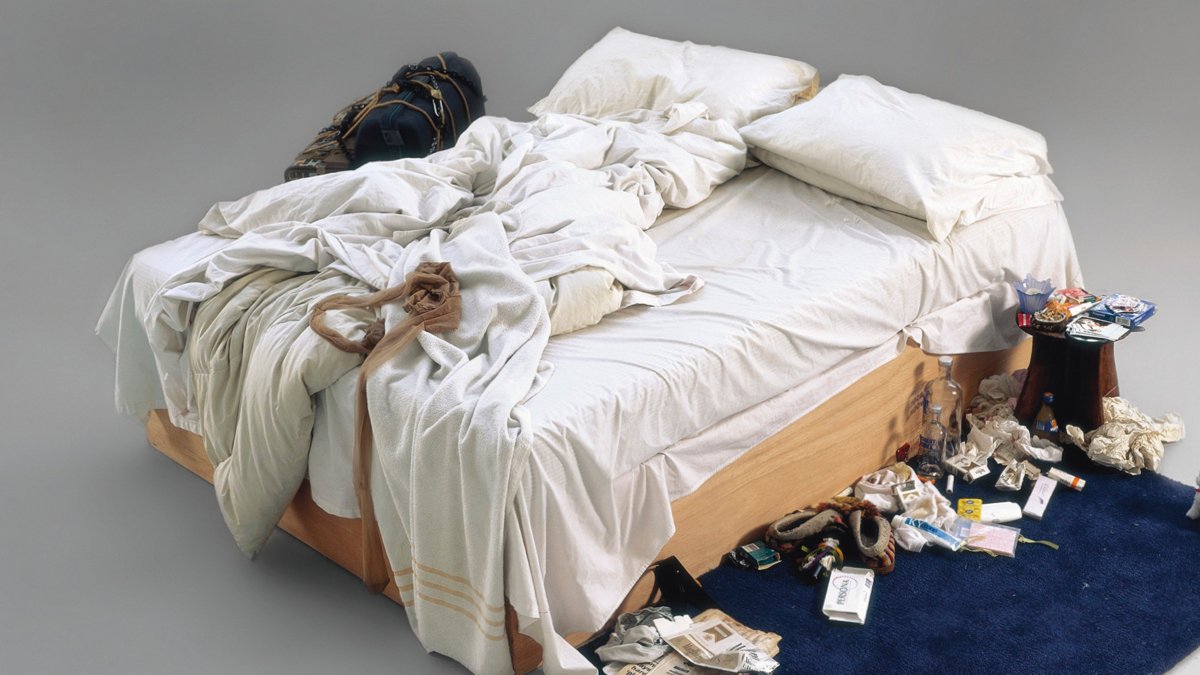
Tracey Emin, My Bed, 1999
Emin’s play was praised for its honesty and vulnerability, but also criticized for its explicit and intimate nature. She broke with traditional norms by addressing themes such as trauma and sexuality in a raw way, challenging expectations about female behavior and appearance and exploring social and cultural norms.
The self-destructive work of art
In October 2018, the enigmatic artist and political activist Banksy caused a real stir in the art world. His iconic work Girl with Balloon, which had been painted on a wall in East London, was put up for sale at Sotheby‘s. After being auctioned for £1.4 M, what nobody expected happened: a hidden device in the painting triggered a paper cutter, partially destroying the piece and leaving the public and the art market in shock.
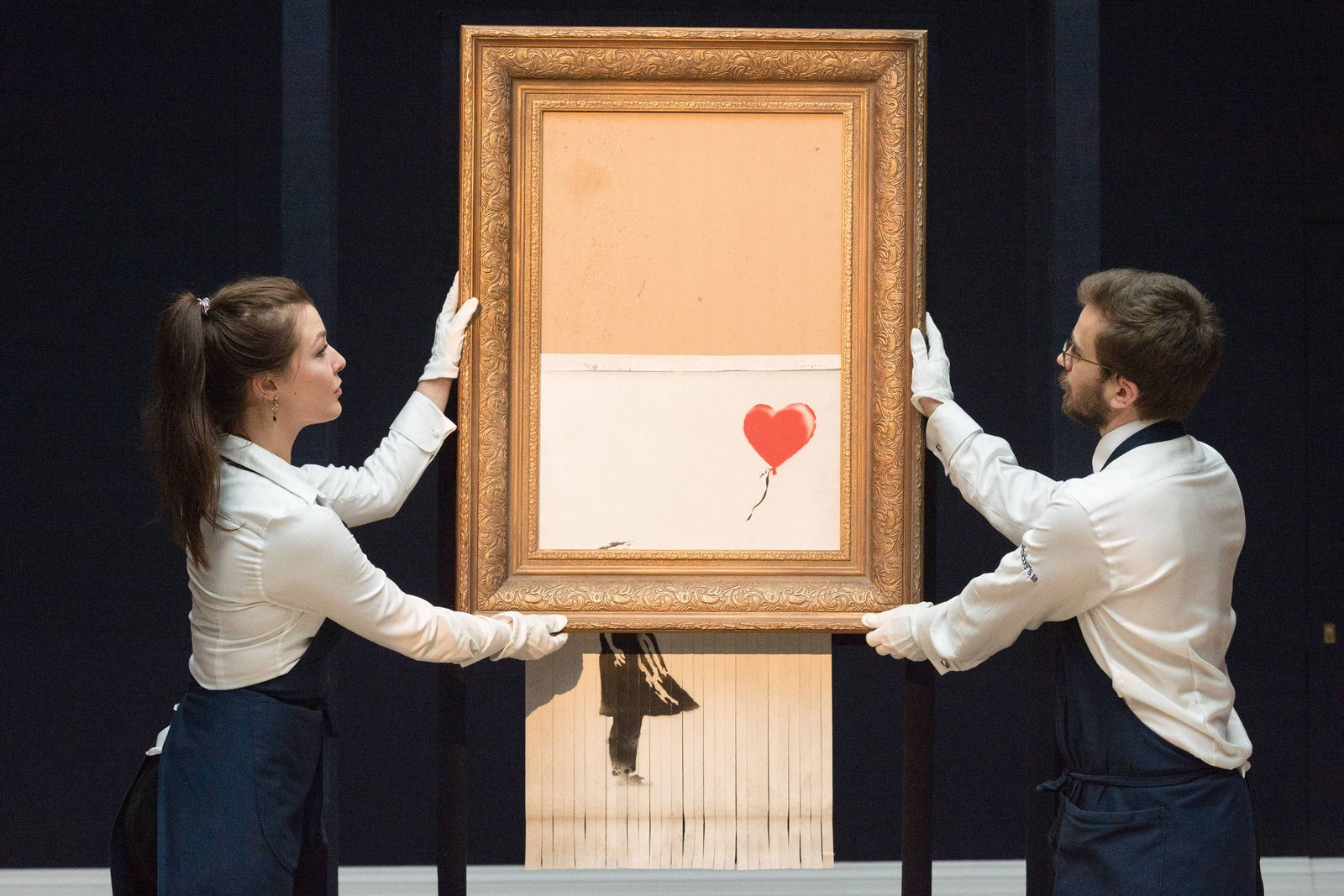
Paper cutter hidden in Banksy‘s painting Girl with a Balloon
At the time, Banksy made a joke about the incident on his Instagram, sharing a photo of the work being destroyed with the caption: “It’s going, going, gone…”. The British auction house commented that the “unexpected incident instantly became” a milestone in the history of art. In 2021, the painting, now titled Love is in the Bin, was resold at Sotheby’s for $25.4M, confirming the importance of the artist’s intervention in the quotation of the work.
The Cattelan Controversy
Maurizio Cattelan‘s Comedian, 2019, a banana taped to a wall with gray duct tape, sparked intense debate when it was unveiled at Art Basel Miami Beach. The artwork challenged ideas of art, authorship, and humor, especially given its $120,000 price tag. Its simplicity and absurdity made it one of the most controversial and talked-about works of the decade.
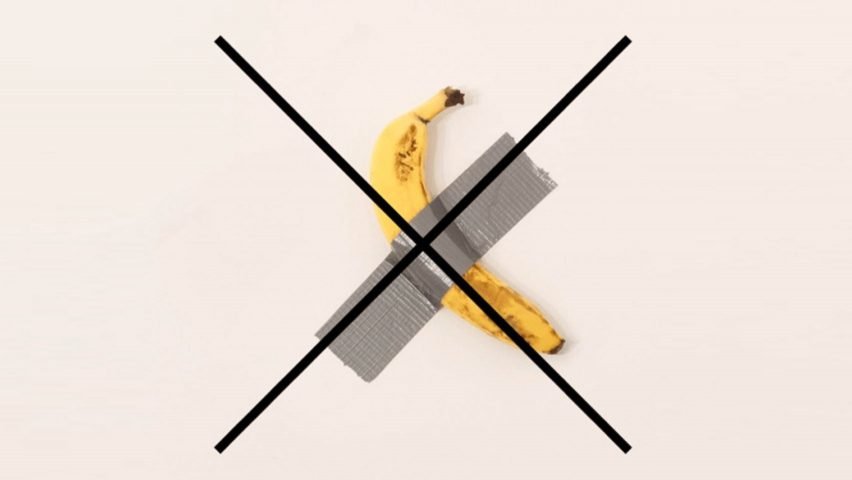
Maurizio Cattelan, Comedian, 2019
The controversy grew even more when, during Art Basel Miami Beach in 2019, artist David Datuna removed the banana and ate it, calling his performance a Hungry Artist.
Known for provocative works like America, 2016, Cattelan continued his legacy of challenging art-world conventions. Comedian posed a playful yet profound question: What determines an artwork’s value? The success and media frenzy around Comedian highlight Cattelan’s blend of serious art and satire, reflecting how contemporary art often plays with value, commodification, and the absurdities of the art market.
Paris Olympics 2024
The recent opening ceremony of the Paris 2024 Olympic Games generated significant controversy due to a performance called “Festivity”, which included drag queens and DJ Barbara Butch, an LGBTQ+ icon, around a table, which some interpreted as a parody of Leonardo da Vinci’s “Last Supper”.
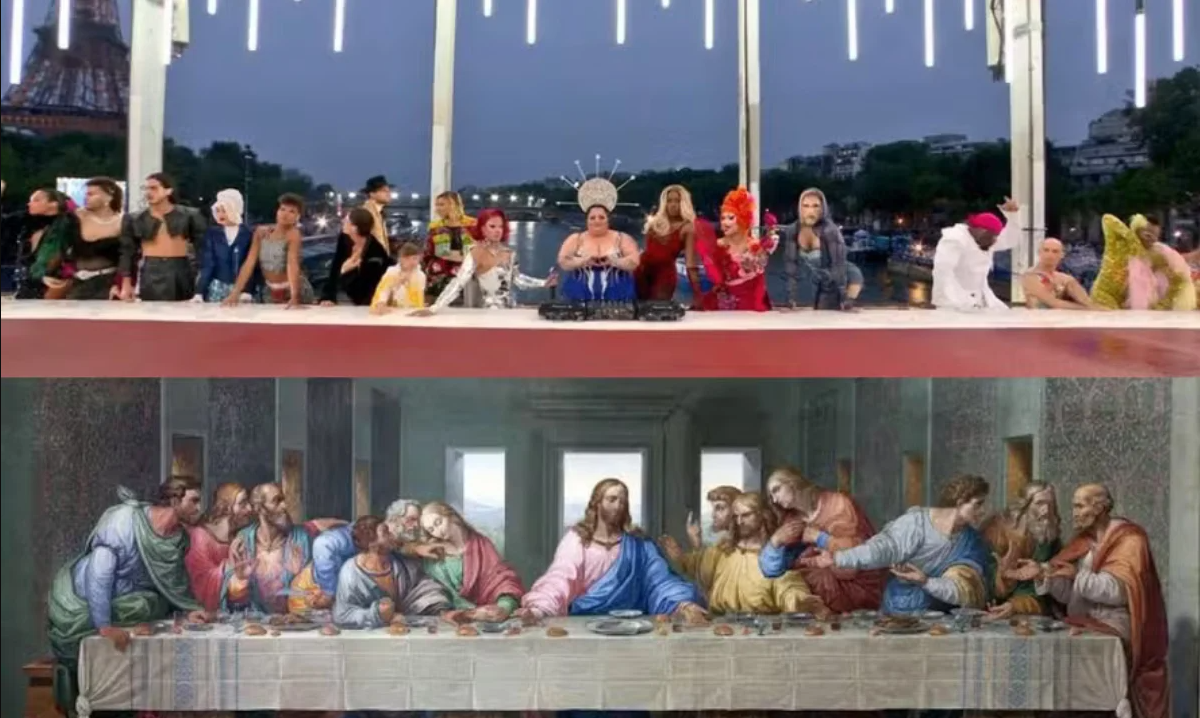
The scene was criticized by far-right figures such as Marion Maréchal, who branded it a provocation by a left-wing minority. In response, artistic director Thomas Jolly clarified that the performance was inspired by a pagan celebration dedicated to Dionysus, with the aim of promoting tolerance and diversity. Subsequently, the Paris Public Prosecutor’s Office reported that Jolly had filed a police complaint on July 30, claiming to have received death threats, “public insults” and “defamation”.
The Catholic Church’s emphasis on love and tolerance contrasts sharply with the criticisms directed at the recent performance art. What some view as provocative is, in reality, an artistic expression challenging conservative norms. The backlash, often fueled by far-right figures, seems more about stirring controversy than engaging with the art itself. Similarly, a Brazilian artist’s performance at the British Museum faced criminal accusations, highlighting a broader resistance to art that pushes boundaries. These criticisms often stem from retrograde views, not the art itself.
Controversies in the art world are key to challenging norms and stimulating debates about the limits of creativity. Provocative works, such as those exemplified in this article, reflect social and cultural tensions while challenging established standards. The resistance faced by these artists highlights the importance of innovation and shows how art can be an engine of transformation.
In the end, these debates remind us that the value of a work of art lies not only in its aesthetics or form, but also in its ability to provoke, challenge and reflect on the complexities of the contemporary world.